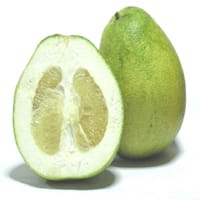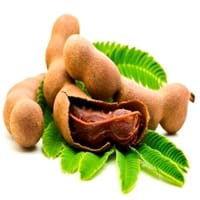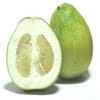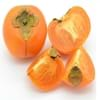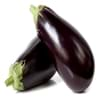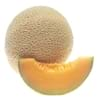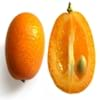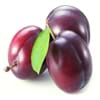Health Benefits
Cancer prevention, Heart care, Prevents Urinary Tract Infection
Boosts immune system, Boosts respiratory health, Cancer prevention, Digestive aid, Piles treatment
General Benefits
Digestive aid, Fights against infections, Flu treatment, Healing of wounds, Helps in weight loss, Treatment of common cold
Beneficial in improving nerve function, Protects against parasites and worms, Relieves pain
Skin Benefits
Anti-aging benefits, Brightens and lightens complexion
Anti-aging benefits, Brightens and lightens complexion, Exfoliates skin, Hydrates skin, Treatment of dark spots
Hair Benefits
Promotes longer and healthier hair, Protects hair
Prevents hair loss
Allergy Symptoms
Abdominal cramps, Abdominal pains, Diarrhea, Lightheadedness, Nasal congestion, Nausea, Swallowing difficulties, Swelling of mouth, tongue or lips, Vomiting
Abdominal pains, Breathing difficulty, Dizziness, Eczema, Fainting, Hives, Itching, Nasal congestion, Swelling of face, Tingling sensation in mouth, Vomiting
Side Effects
Allergic reaction, Dizziness, Stomach pain
Decrease in blood sugar levels, Induces acid reflux, Allergic reaction, Tooth decay, May form gallstones
Best Time to Eat
As a snack in the late afternoon, Don't consume at night and before bed, Eat the fresh ones, avoid mixing with any other foods, don't eat after meal., Morning time (before lunch)
Along with meal, As a snack in the late afternoon, Don't consume at night and before bed, Strictly avoid empty stomach
Vitamin A (Retinol)
Not Available
Vitamin B5 (Pantothenic Acid)
Not Available
Vitamin B9 (Folic acid)
Not Available
Vitamin C (Ascorbic Acid)
Vitamin E (Tocopherole)
Not Available
Vitamin K (Phyllochinone)
Not Available
Lutein+Zeaxanthin
Not Available
Phytosterol
Not Available
Calories in Fresh Fruit with Peel
Not Available
Calories in Fresh Fruit without Peel
Not Available
Calories in Frozen Form
Not Available
Calories in Canned Form
Not Available
Not Available
Calories in Jam
Not Available
Type
Citrus, Tropical
Tropical
Season
All seasons
Spring, Summer
Varieties
Chandler, Cocktail, Cuban Shaddock, Hirado Buntan, Honey, Jaffa Red, Mato Buntan, Pomelit, Reinking, Siamese Sweet and Sweetie
PKM 1, Urigam, Hasanur, Tumkur prathisthan, DTS 1 and Yogeshwari
Color
Green, Pink, Red, Yellow
Brown, Reddish-brown
Inside Color
Creamy Yellow
Brown
Shape
Round
Curving Cylinder
Taste
Juicy, Sweet
Sour-Sweet
Origin
Malaysia, South-Eastern Asia, Thailand
Africa
Soil Type
Clay, Loam, Sandy
Loam, Sandy, Sandy loam, Well-drained
Climatic Conditions
Warm
Humid to dry, Rainfall, Warm to hot climate
Facts about
- Flowers of pomelo fruit are used to make perfumes.
- Pomelo tree wood is used for the manufacture of tool handles.
- Life of pomelo tree is around 10 years.
- Height of pomelo can be 15-20 feet.
- Tamarind is used to prevent body odor.
- African children use the tamarind seeds in games.
- No cases of tamarind toxicity or allergy reported till date.
Other Countries
Argentina, India, Israel, Mexico, South Africa, Sudan, Thailand, Turkey, United States of America
Africa, Australia, Brazil, China, Mexico, Nigeria, Sudan, Taiwan
Top Importer
Europe
United States of America
Top Exporter
United States of America
Thailand
Botanical Name
Citrus maxima
Tamarindus indica
Synonym
Citrus grandis
Tamarindo, tamarindus
Subkingdom
Tracheobionta
Tracheobionta
Division
Magnoliophyta
Magnoliophyta
Class
Magnoliopsida
Liliopsida
Species
C. maxima
Tamarindus indica
Generic Group
Citrus fruit
Tamarind Sub
Difference Between Pomelo and Tamarind
We might think that Pomelo and Tamarind are similar with respect to nutritional value and health benefits. But the nutrient content of both fruits is different. Pomelo and Tamarind Facts such as their taste, shape, color, and size are also distinct. The difference between Pomelo and Tamarind is explained here.
The amount of calories in 100 gm of fresh Pomelo and Tamarind with peel is 38.00 kcal and Not Available and the amount of calories without peel is Not Available and 239.00 kcal respectively. Thus, Pomelo and Tamarind belong to Low Calorie Fruits and High Calorie Fruits category.These fruits might or might not differ with respect to their scientific classification. The order of Pomelo and Tamarind is Sapindales and Fabales respectively. Pomelo belongs to Rutaceae family and Tamarind belongs to Fabaceae family. Pomelo belongs to Citrus genus of C. maxima species and Tamarind belongs to Tamarindus genus of Tamarindus indica species. Beings plants, both fruits belong to Plantae Kingdom.
